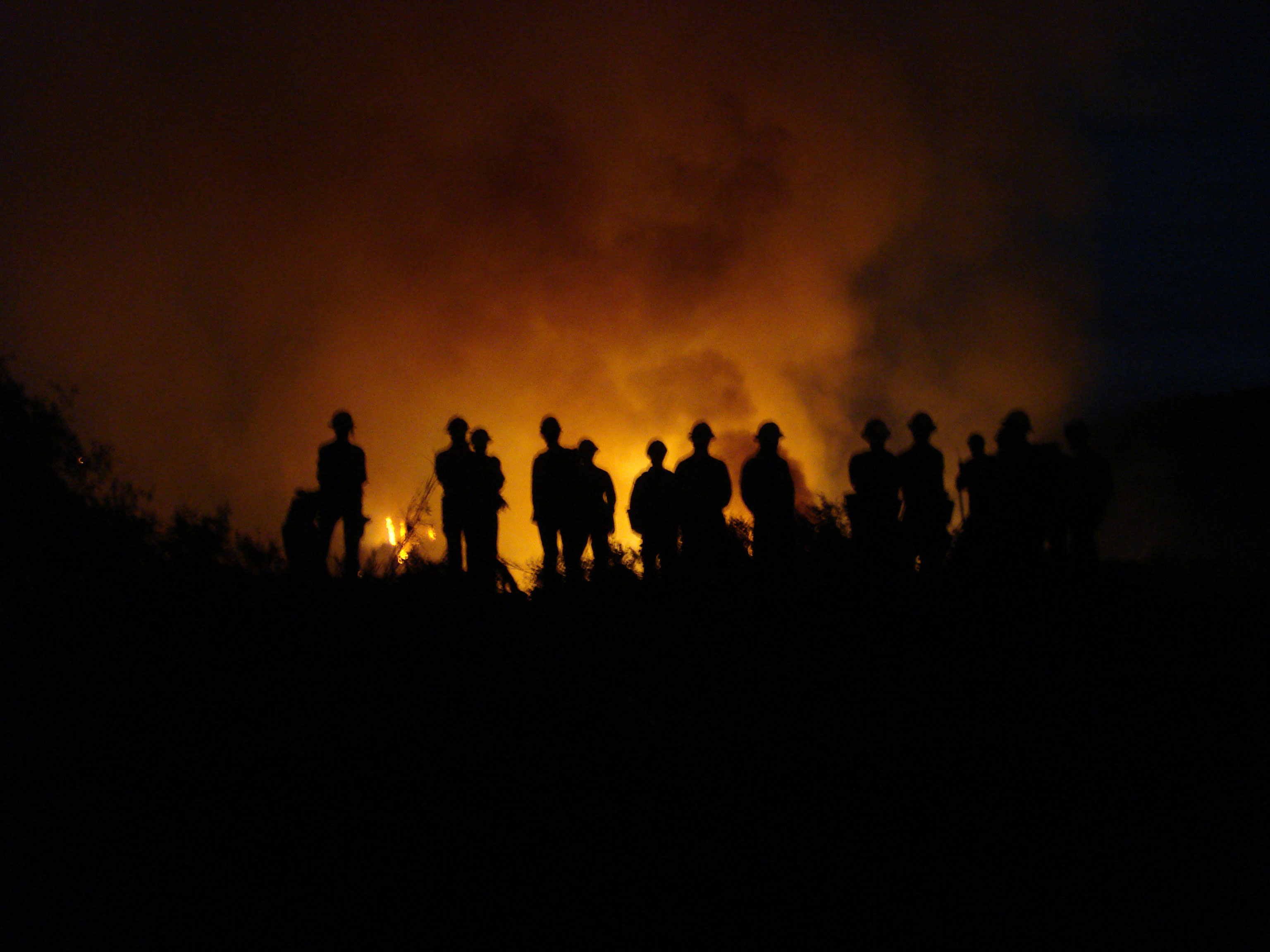Indiana Wildland Firefighters
By Bob McGriff and Kay Jernigan McGriff
Each summer, as news reports spread about wildfires in the West, a few Indiana wildland firefighters prepare for a call that will send them to work extinguishing those fires. The people who volunteer for wildfire assignments are unique people--people willing to perform hard physical labor in a complex, high stress environment. The job offers Hoosiers firefighters a change of pace from their regular jobs and an opportunity to see parts of the United States that they may not normally visit. Wildland firefighters are also paid by the Federal government for their work. Because of the long hours, many wildfire paychecks add several thousand dollars to the Indiana economy. A group of Indiana wildland firefighters on the job in California, circa 2008. (photo by Darren Bridges)
A group of Indiana wildland firefighters on the job in California, circa 2008. (photo by Darren Bridges)
The benefits Indiana wildland firefighters provide go far beyond extra income and travel. Firefighters are able to use their skills within the Hoosier State. Indiana experiences hundreds of small wildfires within its boundaries each year. Most of these fires are suppressed by local volunteer fire departments. However droughts like we experienced in 2012 create conditions where wildfires can burn hundreds of acres.
As firefighters gain experience, they develop teamwork and leadership skills that they use in their jobs and communities. Leadership opportunities come from positions within the fire crew and within the management teams for large fires. Working as part of a fire crew to safely contain a large fire requires that crew members work with each other and within the Incident Command System to get people and supplies in right place at the right time to do the job. The experience gained on wildland fires within the Incident Command System has helped the state of Indiana better respond to local emergencies such as tornadoes, ice storms and floods.
Wildland firefighters who have honed chainsaw skills while on fire assignment have been called on by Indiana leaders to help clean up from natural disasters here at home.
Each year government agencies and private landowners use controlled burns to manage wildland areas. Fire Headquarters personnel provide training and resources to safely complete these burns that maintain early successional habitat. From the times of Native Americans and early settlers, people have used fire in Indiana to manipulate their environment. Not only does burning create wildlife habitat, it also benefits certain communities of plants that rely on fire for their survival. Even though fire can be beneficial, most woodland owners should follow Smokey Bear’s advice to prevent forest fires.
Whether volunteer wildland firefighters remain in Indiana or travel to out-of-state fires, the Indiana Division of Forestry Fire Headquarters coordinates their training and dispatch. Beginning firefighters must complete basic wildfire coursework and pass a physical test to become qualified. Yearly refresher training and work capacity test are required to maintain certification. Wildland firefighters must be able to hike long distances over rugged terrain while carrying tools and supplies. The basic handtools for fighting wildfires--fire rake, Pulaski, and shovel--have not changed in over a century. What has changed the most in fighting wildfires is knowledge and communication. Each tragedy that has occurred has forced wildland firefighters to study fire behavior and reevaluate their policies and practice to increase safety. Advances in technology such as cell phones and tablet computers have improved communication and provided firefighters with more information about fire conditions. Advances in aviation have also enhanced firefighting efforts. Planes and helicopters are used to transport people and supplies as well as to drop water and retardant directly on fires.
Wildfires and other natural disasters will continue to plague Indiana and the United States. Wildland firefighters possess a unique set of skills and training that allows them to assist Hoosiers and fellow Americans in their time of need.
Rob McGriff has worked with the Indiana Division of Forestry as a District Forester since 1993. He is a trained wildfire fighter and serves as property manager of Selmier State Forest. Kay Jernigan McGriff has taught middle school language arts for fifteen years. She is an avid reader, writer and educator.
